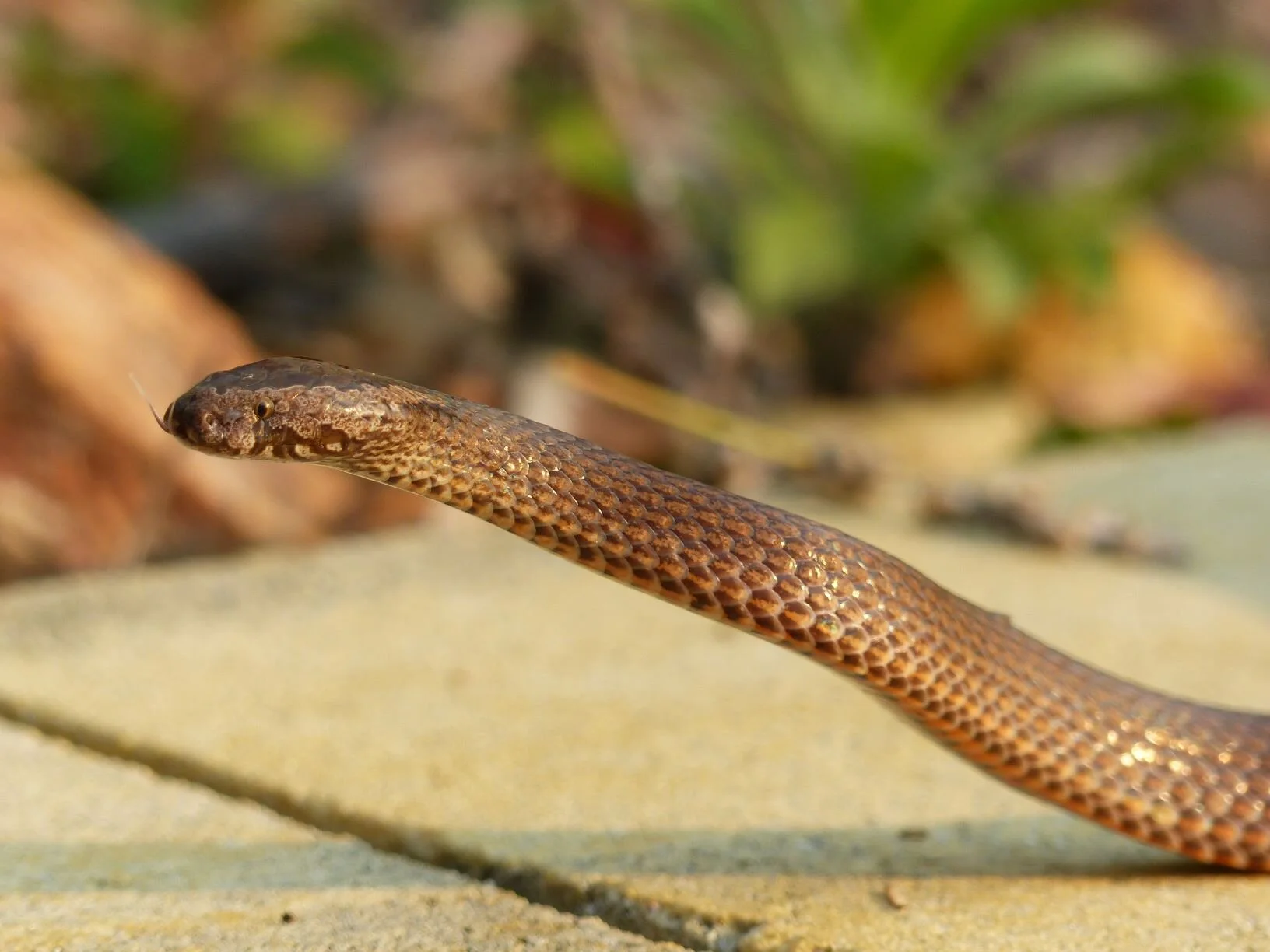golden-crowned Snake (cacophis squamulosus)
Toxicity: Venomous. Not considered dangerous.
Description: The Golden-crowned Snake is the largest of the crowned snakes reaching 65cm long. It has a distinctive head pattern with a ‘crown’ consisting of a light tan colouring that runs from the nose and around the side of the head, not completely meeting at the back of the head. The eye is relatively small. The body is dark brown to grey. The ventral scales are a salmon-orange colour with a line of dark triangles running down the centre.
The Golden-crowned Snake is a member of the front fanged venomous Elapid family.
General habits: The Golden-crowned Snake is distributed along the coast from Wollongong to mid-east QLD. It is a nocturnal snake, spending the day under rocks or leaf litter. When threatened, the Golden-crowned Snake will rise up and may mock-strike with the mouth closed. It will thrash around if handled.
Diet: Almost exclusively eats lizards (finding sleeping lizards by smell rather than sight), supplemented by small amounts of frogs and eggs.
Locally: Not commonly found in the Tweed, although they are probably widespread. Generally Golden-crowned Snakes will only come into contact with people if they accidently come inside the house (or are brought inside by the cat).
Reproduction: Golden-crowned Snakes lay between 2 and 15 eggs (average clutch of 6 eggs) that hatch around March each year.
Distinctive head markings of the Golden-crowned Snake.
Orange under belly with line of black triangles down the centre.



